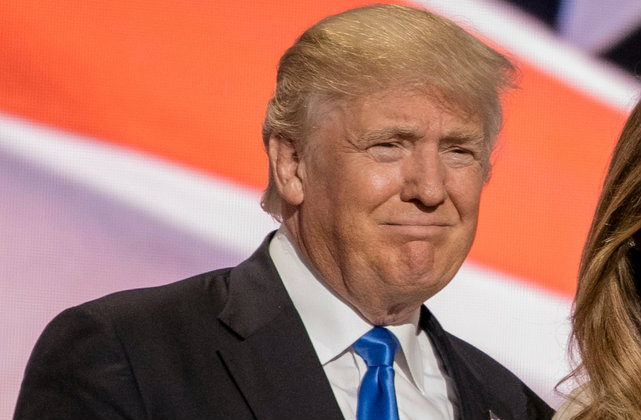 Like it or not, we’ve all begun to follow Peter Thiel’s advice to “take Trump seriously, but not literally.” So when Trump’s delusions of grandeur prompt him to proclaim that he’s “signed more bills than any president, ever,” we’re not remotely surprised when the statement turns out to be completely false. First, let’s just be clear about the blatant falsity of Trump’s bragging. He has signed 42 bills as of this week, which is actually slightly below average if we’re taking into account the past six Presidents. President Jimmy Carter signed 70 bills during his first six months, President Bill Clinton signed 50, and President Barack Obama signed 39. Sure, Trump is a little ahead of George W. Bush, who had signed just 20 in his first half-year, but he’s also way behind Truman and Roosevelt, who signed 55 and 76 respectively.
Like it or not, we’ve all begun to follow Peter Thiel’s advice to “take Trump seriously, but not literally.” So when Trump’s delusions of grandeur prompt him to proclaim that he’s “signed more bills than any president, ever,” we’re not remotely surprised when the statement turns out to be completely false. First, let’s just be clear about the blatant falsity of Trump’s bragging. He has signed 42 bills as of this week, which is actually slightly below average if we’re taking into account the past six Presidents. President Jimmy Carter signed 70 bills during his first six months, President Bill Clinton signed 50, and President Barack Obama signed 39. Sure, Trump is a little ahead of George W. Bush, who had signed just 20 in his first half-year, but he’s also way behind Truman and Roosevelt, who signed 55 and 76 respectively.
Putting aside the obvious criticism – that our President and his press office are telling boldface lies to the American people in hopes that his supporters are not familiar enough with either American history or Google to call him out on his bullshit – Trump’s hype about signing “more bills” is idiocy on par with his claim to have “the best words.” I mean, not even a second-grade class president would run on the platform of having the largest number of regulations. I would like to think that even Trump’s base understands that when it comes to legislation, content is more important than quantity.
So let’s talk about that content, shall we?
A recent New York Times article organized Trump’s “done” list as follows:
Four bills designed to improve the Veterans Affairs Department; four for Space and Science Bills; five for Bureaucratic Tweaks; four for Ceremonial and Routine lawmaking (including things like naming federal buildings and appointing board members to the Smithsonian); and … wait for it … fifteen regulations that un-do actions taken by the Obama administration. Those fifteen regulations ranged from nullifying a rule to protect waterways from coal-mining debris to nixing one that required federal contractors to disclose labor violations. He’s also un-done rules that would have required states to collect data on teacher preparation programs, unified school district rating programs, and prevented the mentally disabled from buying handguns.
There is one way in which Trump is absolutely ahead of his predecessors – and that’s his use of the Congressional Review Act. That 1996 law allows Presidents to nullify some of the regulations passed by previous Presidents. Before Trump, the Congressional Review Act had only been used once (by George W. Bush) to invalidate one regulation (a rule about workplace injuries). Trump came into office armed with this Obama-blaster and has already used it fifteen times. That’s a lot, given that the Congressional Review Act only authorizes him to undo regulations passed after May 2016.
Clearly, our President is obsessed with measuring himself. And like a shady street merchant with his hand on the scale, Trump is determined to emerge bigger than all who have preceded him. It’s certainly not news that Trump doesn’t seem to actually understand how legislation works; for months, he’s kept up his campaign rhetoric about how for every federal regulation he adopts, he’ll get rid of two. Perhaps Trump’s focus away from the content of laws and on to the number of laws is a well-crafted public relations tool, designed to change the evaluative criteria for those who enjoy keeping score without really knowing what game they’re playing. Such pivots go to the heart of the brand of the Trump presidency.
As we begin the second half-year of this administration, though, the Congressional Review Act will no longer be an available tool for Trump to pad his stats. It only allows a new President to undo regulations passed during the last six months of the previous administration. From here on out, Trump will have to pass or repeal laws the regular old, slow-lane way. Maybe he’ll use that extra time to focus on the content instead of the quantity of his legislation. Here’s hoping.
[Image via mark reinstein/Shutterstock]
This is an opinion piece. The views expressed in this article are those of just the author.